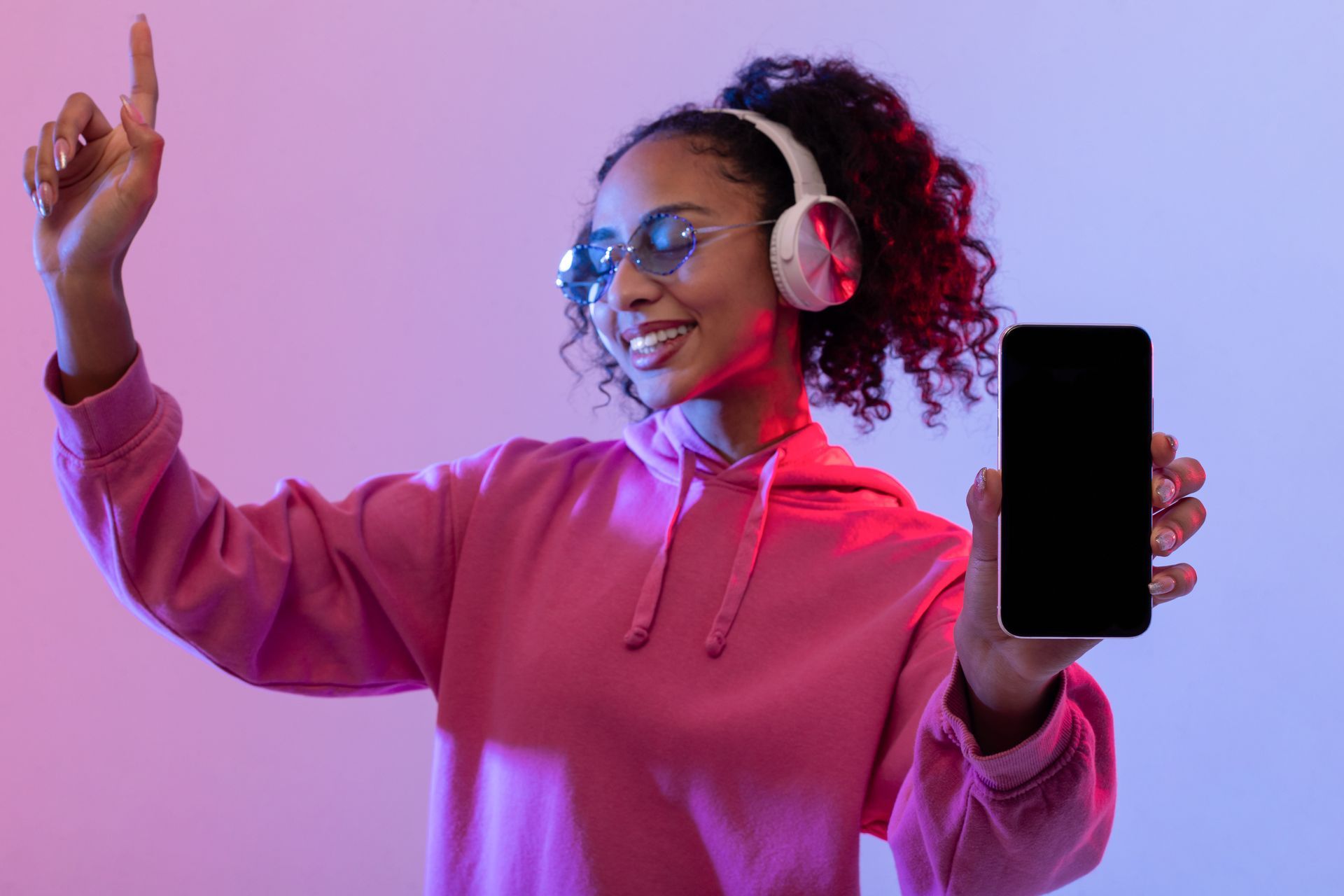Why is Multicultural Marketing Important?
Maya Rector • June 12, 2020
Making up roughly 40% of the U.S. population, multicultural audiences are quickly catching up to the general market. Given their growing numbers, and the public’s growing demands for diversity and inclusion, this is a population you cannot afford to miss out on. So, how should you be structuring your multicultural marketing strategy to engage them most effectively? Look no further than digital. Keep reading to find out more about the importance of leveraging digital marketing when advertising to multicultural U.S. audiences.
Your Multicultural Marketing Strategy Today will Inform Tomorrow’s Long Term Consumers
Multicultural groups across the U.S. are growing in number, and it’s projected
that the country’s racial makeup in 2030 will consist of whites at 55.8% of the population, and Hispanics at 21.1%. Meanwhile, the percentage of black and Asian Americans will also grow significantly, meaning that between now and 2030, minority groups will be getting bigger while the white proportion of the population goes down in size. Given that growth is on the rise, this also means that the country’s multicultural population is younger than the general market population. While Millennials are the largest adult generation in the U.S., Gen Zers (those born after 1996 – ages 7 to 22) are catching up - and they are more diverse than ever with nearly half of Gen Zers (48%)
belonging to a racial or ethnic minority.
When it comes to the social and political views that shape their world, their opinions tend to lean liberal on key issues, similar to those of Millennials. What does this mean for your multicultural marketing plan? The time to understand this group and establish relationships with these crucial audiences is now. Not only can you solidify valuable customers now, but reaching younger audiences with more years of spending power ahead of them can make a huge difference in your business’ overall growth.
If there’s one thing you need to know about the country’s Millennial and Gen Z audiences, it’s that their values mean everything to them, and they’re not willing to compromise. For instance, according to a recent report from Publicis Media’s Moxie, 7 out of 10 Gen Z’ers defend causes related to identity, and 74% say it’s imperative to feel comfortable expressing yourself, compared to 37% of millennials. Gen Zers also tend to be more frugal than Millennials, with 83% saying that they are conservative when it comes to their finances. Businesses can accommodate this tendency by taking a pragmatic approach and emphasizing the practicality and value of their products or services. The study also recommends that instead of brands striving for perfection when reaching Gen Z, they should aim for transparency and speed - which will go a long way in gaining their trust.
It is also crucial to consider the traits and habits instilled in this younger audience due to the effects of COVID-19 and social distancing that have shaped them during their formative years, which has accelerated their digital and social media use. In light of recent social movements led by younger generations such as #BlackLivesMatter, #MeToo, and #MarchForOurLives, Gen Z has consistently turned to action to enact their values in their daily lives. Seeing that this audience feels a calling to do their part and make the world a better place, they’re expecting that the brands and businesses they support are willing to do the same. As a result, brands can benefit from demonstrating their values through multicultural marketing, and showing how they practice what they preach in order to win their long-term loyalty.
Tech-savvy Audiences - especially Hispanics - are Ready to be Reached
Younger audiences also tend to be more tech-savvy than their older counterparts, so it is imperative that advertising campaigns not only include relevant creative messaging, but they must deliver their messaging on the most popular platforms and at the right time in order to run successful campaigns. When it comes to Hispanics, the majority of first-, second- and third-generation Hispanics in the U.S.are drawn to content that reflects their culture, according to a report by PwC. Because of the diversity that exists within the U.S. Hispanic demographic, your Hispanic marketing strategy should vary depending on the age, language preference, and nationality of the target audience that needs to be reached. When it comes to the Hispanic population, content amplified across digital platforms tends to perform the best, and will depend on preference in terms of the use of English or Spanish, or a mix of the two.
Young or old, Hispanics are a digital-first audience, and have been early adopters of emerging technologies such as smartphones, so much so that 90% stream video on either a smartphone or tablet, which is 10% more than non-Hispanic consumers. Digital is also crucial for Hispanics since it is used to create a community
of friends and family, aside from being a source of entertainment and content. For instance, the same report shows that nearly half of Hispanic millennial consumers use Snapchat for this purpose, which is 20% more than non-Hispanic millennials. That being said, community and word of mouth suggestions mean everything to this group, and Hispanics are nearly twice as likely than non-Hispanics to recommend and review products or services. Ultimately, reaching this young and digitally savvy population can pay off big time given their many spending years and purchasing decisions to come.
If you still aren’t convinced about the power of social media, especially around younger demographics, take this staggering statistic into account: Global social media ad spend reached $84 billion in 2019, which was the first year in history that social media spend outperformed print ad spend. Additionally, in the US alone, Facebook ad spend reached $25.56 billion in 2019 - representing a 107% increase from 2016, according to an eMarketer report. Clearly, the world is taking note of the immense reach and influence of social media and how it can drive purchase intent and consumer behavior.
Inclusivity Matters: Even within Hispanic Marketing, Backgrounds can be Nuanced
Despite how multicultural audience segments may be commonly portrayed, these groups do not exist within monolithic cultures - and it’s important to recognize this when marketing to them. While they may share common traits, it’s important to understand the nuance when it comes to reaching them based on plenty of behavioral and cultural factors that play a role, and consider that not everyone falls neatly into just one category.
For instance, a Pew Research Center survey
of Latino adults shows that one-quarter of all U.S. Latinos self-identify as Afro-Latino, Afro-Caribbean or of African descent with roots in Latin America. This segment of Latinos within the broader “Latino” category in the U.S. are more likely to identify as Afro-Latino or Afro-Caribbean than those with roots elsewhere (34% versus 22%, respectively). When thinking about strategy, it is also vital to note that those who identify as Afro-Latino are more concentrated on the East Coast and in the South than other Latinos (65% of Afro-Latinos live in these regions vs. 48% of other Latinos). If your business is based in these areas, it would greatly benefit from having a strategy in place to reach specific demographics such as this one.
Fortunately, major strides are being made to acknowledge the diversity within ethnic and racial groups and how they are portrayed in the media, within both multicultural marketing and beyond. For instance, Ilia Calderón, a news anchor on Univision's flagship Noticiero Univision,
has made history as the first Afro-Latina to anchor the weekday evening news for a major broadcast network in the U.S. When asked about being the first to do so as an Afro-Latina in an interview, Calderón explained, “I’m not gonna lie, I think it is hard. We are a minority within a minority, so the representation is not there. However, Univision is showing other companies that Black Hispanics can be successful too, and hopefully the company sets an example for other companies, in the media and elsewhere." As more companies follow suit, representation for all groups will become the “new normal,” no matter how nuanced.
Why are Many Companies Developing Multicultural Marketing Programs?
The importance of diversity and inclusion have undoubtedly been at the forefront of media across advertising and entertainment in the last few years, and you've likely seen brands aligning themselves with certain causes or groups. Most recently, many major brands from Nike to Netflix released online statements in solidarity with the Black Lives Matter movement. However, this isn’t necessarily anything new since brands often capitalize by aligning themselves with causes along with the seasons, such as Black History Month, Pride Month, Hispanic Heritage Month, and many more - but consumers expect more than just that, and they expect that companies will do the work consistently rather than just showing up for them once a year.
Inclusive advertising is no longer just a “nice to have” for consumers. Currently, most Americans (61%) find diversity in advertising important, and 38% said they are more likely to trust brands that include more diversity in their ads. Overall, this means that roughly one-third of LGBTQ+, African Americans, and Millennial consumers said that diversity plays a major role in their likelihood to purchase products or services from a company. Failure to not represent identities favorably can cause setbacks for brands - for example, 34% of survey respondents said they’ve boycotted a brand, at least in the meantime, because they felt their advertising was not inclusive or representative of them.
African Americans, Asian Americans, and Latino/Hispanic Americans make up 37% of the U.S. population, yet they do not feel properly represented
in media and advertising. 66% of African-Americans and 53% of Latino/Hispanic Americans said they feel their ethnic identity is often portrayed stereotypically. Asian Americans also said that their ethnicities are not represented in advertising, at 51%. Both gender and ethnic representation have been lacking for consumers, which presents a missed opportunity in terms of utilizing personalization to reach audiences effectively.
One way to do this is to look at creative targeting options and optimize campaigns to reach wider and more diverse audiences. Some verticals have made it a point to create more diverse ads in recent years, with food (33%), healthcare (30%), and retail (30%) currently ranked to include the most diversity in their ads in the U.S., and banking, insurance, and automotive sectors ranking the lowest.
Get Precise: Multicultural Marketing Research Shows that Campaigns Benefit from Sophisticated Targeting
Digital is a useful method for reaching multicultural audiences since it allows for precise targeting, which can help for reaching your ideal customer, as well as improving the consumer experience since 80% of consumers
say they are more likely to do business with a company if it offers personalized experiences - which goes hand in hand with personalizing messaging for diverse audience segments. A major part of targeting also means not just reaching audiences on one channel, but across several to reach them throughout their purchase journey.The proof is in the pudding, with omnichannel campaigns seeing an 18.96% engagement rate, compared to single channel’s 5.4% engagement rate, since consumers frequently alternate between channels across various devices.
Major companies and even government agencies have been taking note as well. For example, the Census Bureau
recently launched a $500 million marketing campaign in 13 different languages to reach the country’s multicultural audiences - and they’re definitely onto something. It’s no secret that language plays a huge role in communication, and it also plays a major role when it comes to connecting with an audience’s culture. A Kantar consulting study
revealed that, 57% of Hispanics believe that the Spanish language is more important to them today than it was just five years ago, and 62% of younger Hispanics who felt underrepresented in the market reported that they were becoming more interested in the Spanish language. Thanks to the power of targeting on digital platforms, Hispanic marketing campaigns can reach audiences in their preferred language to establish comfortability and give a nod to their culture.
Measurement tools to see how ads are perceived and portrayed by groups are also on the forefront of digital marketing. Recently, a new panel-based metric called the Cultural Insights and Impact Measure (CIIM)
was created by the Alliance for Inclusive and Multicultural Marketing (AIMM). This metric allows brands to measure the presence of culturally specific values in an ad, as well as the medium and specific program where the ad appears - and it’s come at a much needed time. Of the 150 ads measured using the metric, only seven scored in the top quartile across all segments. Luckily, better targeting methods can change that with swaps such as showing varying ad creatives to different segments in order for all groups to feel culturally represented and celebrated. Not only does this improve public perception, but ads containing cultural insights
that resonate with audiences have been shown to measurably boost purchase intent, brand loyalty, and relevance. It’s a win-win.
Takeaway
There’s no denying that digital is the future, and it’s also the present! By 2020, it’s been estimated that businesses will be spending $110 billion
on digital advertising in the US, which is more than the spend for TV and print ads combined.
When taking younger, multicultural audiences into account, digital advertising is no longer an option - it’s a necessity. Thanks to digital’s ability to provide precise targeting options to reach diverse audiences on their favorite platforms, multicultural marketing and digital truly go hand in hand with one another.
Let us be your Multicultural Marketing Agency
With proven Hispanic marketing
services
delivering results across digital, broadcast, and events, our experts have worked on campaigns big and small while exceeding client expectations. For case study examples, check out our
success stories within verticals ranging from auto, health care, legal, finance, and more.
Curious to learn more about getting started? Feel free to contact us or find a location near you today.
Check out our video for more multicultural marketing facts!

One noteworthy insight gleaned from recent data is the remarkable tendency of US Hispanics to kickstart product searches on TikTok, more than double compared to their non-Hispanic counterparts. This shows the growing influence of social media platforms, particularly TikTok, in shaping the preferences and purchasing decisions of the Hispanic community.

With contested races, growing voter unpredictability, and the possibility of a presidential rematch looming large, every demographic group will wield significant influence. Among them, Latinos stand out as the fastest-growing and youngest electorate, poised to play a pivotal role in shaping the outcome of key battleground states.

Ever since the tail end of last year, my inbox has been flooded with emails prophesying the imminent trends in digital marketing, advertising, SEO, AI, and the like for 2024. I'm talking about more than 50 emails, and it got me thinking – why not save you some precious time and put it all into an easily digestible summary, highlighting the most important insights?

Social media is not just a platform for connection; it's a thriving cultural hub that bridges gaps, influences opinions, and empowers communities.
When it comes to the United States’ Hispanic community, the numbers and trends in social media use are fascinating. In this post we'll explore the data that sheds light on how Hispanics are making their mark in the digital realm.

In the rich tapestry of American dining, one market segment stands out with its unique flavors, deep-rooted traditions, and a youthful enthusiasm for exploring culinary experiences. We're talking about the US Hispanic dining consumer – a dynamic and influential group that holds the key to a thriving restaurant industry. With youth, repeat visits, and cultural ties as its defining characteristics, engaging this demographic is a strategic move that can take your restaurant to new heights.








